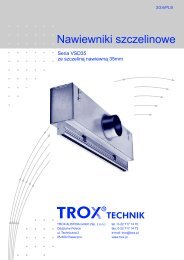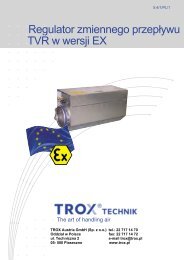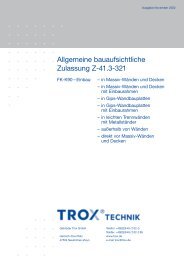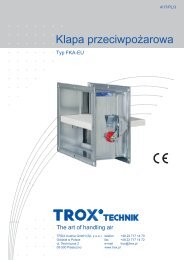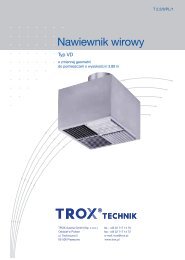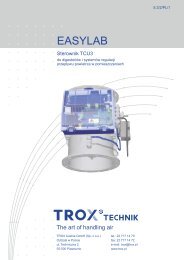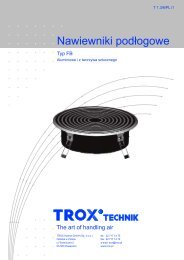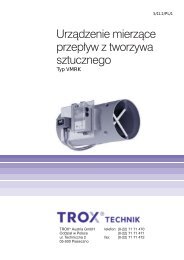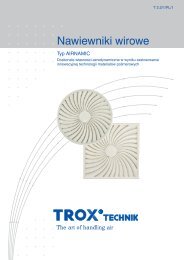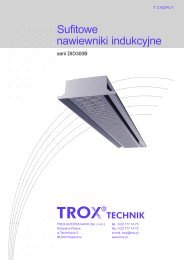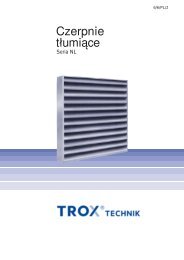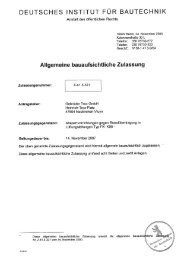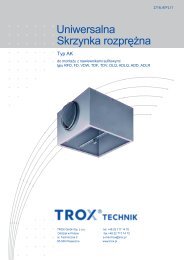Sauter - Pneumatic controller RLP100 - TROX
Sauter - Pneumatic controller RLP100 - TROX
Sauter - Pneumatic controller RLP100 - TROX
Create successful ePaper yourself
Turn your PDF publications into a flip-book with our unique Google optimized e-Paper software.
<strong>TROX</strong> GmbHHeinrich-Trox-Platz47504 Neukirchen-Vluyn,GermanyTel. +49(0)2845 202 0Fax +49(0)2845 202 265www.trox.deE-mail: trox@trox.deHose connections RLP 100 F003-8 7 2 1 6Flow volume <strong>controller</strong><strong>Sauter</strong> RLP 100 F003Product informationLegend+ Plus pressure tapping from differential pressure grid- Minus pressure tapping from differential pressure grid1 Input for operating pressure (1.3 bar, ± 0.1 bar)2 Output actuator (0.2 bar to 1.0 bar)6 Input for flow volume set value (0.2 to 1.0 bar)MOutput from actual flow volume (0 to 1.0 bar)sealed in the factory7 Not used8 Input for room pressure <strong>controller</strong>Attention :The following examples show the important signals for flowvolume control. The integration with the overall control concept,the selection of the other control components as wellas the dimensioning of ducting must be made making allowancefor the <strong>Sauter</strong>specifications.Ensure that the operating pressure is set to 1.3 bar ± 0.1bar by the use of a suitable pressure reducer before connectingto the <strong>controller</strong>.Excessively high pressures can cause irreversible damageto the <strong>controller</strong>.Hose systemThe differential pressure grid of the flow volume control unitand the actuator are connected by hose to the flow volume<strong>controller</strong> in the factory. The operating pressure must beconnected by the customer.Care must be taken that the operating compressed airmeets the requirements for conditioned instrument compressedair (free from oil, dust and water).Actuator direction of control actionIf the operating pressure fails or is switched off, the actuatortravels to a defined end position. This can be the openposition or the closed position of the adjusting damper. Thechoice of direction of control action allows plant-specificsafety requirements to be met (damper open, or damperclosed for sash sensors).NZ (normally closed): Adjusting dampernormally closedDirection of controlaction adjuster to “B”NO (normally open): Adjusting damper normally openDirection of control actionadjuster to “A”9



